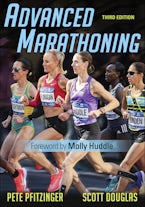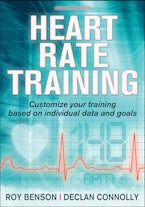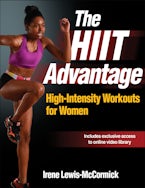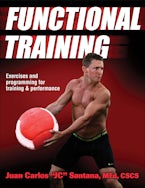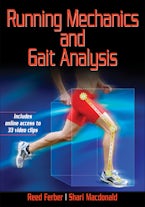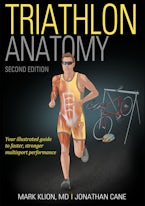
Exercise designed to raise your heart rate

Types of HIIT workouts
HIIT workouts make great at-home workouts, because they can be performed anywhere, with any equipment you have on hand or with no equipment at all. You can do a HIIT workout while running, riding a bike (outdoors or stationary,) using dumbbells, or doing bodyweight exercises. There are multiple forms for designing a HIIT workout – if you’re just getting started, a 2:1 ratio for a standard HIIT workout for only 10 to 15 minutes is a great program design.
HIIT workouts – 20 and 30 minutes
Get your workouts for the day done in a flash with these 20 and 30 minute HIIT workouts for upper and lower body and core.

20-minute lower body and core workout
This lower body and core HIIT workout requires no equipment and can be completed literally anywhere. Following timings as shown for each individual block of work and get a great workout done in only 20 minutes.

20-minute upper body and core workout
This upper body and core HIIT no equipment workout can be completed anywhere and takes only 20 minutes. Following timings as shown for each individual block of work.

30-minute lower and upper body workout
You only need a pair of dumbbells and 30 minutes to complete this lower body & upper body HIIT workout. Follow timings as shown for each individual block of work and feel great about getting your workout done for the day quickly.

30-minute upper body and core workout
This 30-minute upper body and core HIIT workout requires just one resistance tube and can easily be completed anywhere. Following timings as shown for each individual block of work and your workout will go by in a flash.

30-minute lower body workout
This 30-minute lower body HIIT workout requires no equipment except your own body, and can be completed literally anywhere. Following timings as shown for each individual block of work and your workout will go by in a flash.

Your HIIT questions answered by Martin Buchheit
What is HIIT?
It’s the repetition of some high-intensity intervals interspersed with lower intensity recovery periods.
Is HIIT for everyone?
HIIT can be applied to any type of population as long as it’s well programmed and managed. There is evidence that every single type of person can benefit from HIIT.
What is the difference between HIIT and ‘going hard’?
The major advantage of HIIT is that when it’s well managed and well programmed you can hit some very important physiological targets. These have performance and health benefits. The interplay of manipulation between the intensity, the duration of the intervals and the recovery that creates HIIT could be a bit complex in terms of programming but that makes it interesting as well.
Read the full blog post and watch the interview with Martin here

Walking: walk a half marathon
You’re probably already taking advantage of this extra time at home to take more and longer walks, why not take the time to walk a half marathon this summer? With this training plan from Hal Higdon’s Half Marathon Training you’ll cross that finish line in July or August with confidence and a smile on your face.

Running: tips for safely increasing distance
Running is an excellent method for staying active, whether you are training for a specific event like a 5K, marathon, or triathlon, or running for exercise and enjoyment. To avoid injury and setbacks, follow these tips for gradually increasing your mileage.

Running Speed-Demon Protocol
This leg training protocol is designed to improve speed without adding running miles. Easy to do at home in quick training bursts, you can perform this protocol during each commercial break of a TV show, so it has often been called the “TV Speed Program.”

3 Proven Tips to Improve Running Gait Mechanics
A bad running technique can lead to injury. This article will increase your knowledge of running gait mechanics and provide injury reduction techniques.
‘Running gait mechanics’ refers to running technique and form. Analysis can be undertaken to identify biomechanical abnormalities in the gait cycle. Minor changes in technique (or even footwear) can help prevent injury.
In the book, Running Mechanics and Gait Analysis, (which this post is adapted from) authors Reed Ferber and Shari Macdonald state that; Abnormal running mechanics are often cited as the cause of running-related injuries.

Tapering for a marathon: How to reduce training to improve performance
Designing a marathon training plan can be difficult. Knowing what to do in the run-up to the big day is one of the hardest parts. Marathon training can leave you feeling sluggish and fatigued. But, this doesn’t mean you’re overtrained. Experiencing a moderate amount of fatigue during the many weeks of training is normal. Having recovery weeks in your schedule can help battle fight any fatigue caused by training.
As the marathon gets closer you’ll need to cut back your training for longer periods to ensure you’re well-rested for the race. Tapering for a marathon is critical. In this blog post, adapted from Advanced Marathoning, 3rd Edition we’ll look at how reducing your training can improve your performance.

Cycling: find your cycling training zone
To maximize the benefits of any training session, you need to get in the zone–the training zone. But how do you know which intensity level will get you there? For cyclists, whether you are on the open road or on a stationary bike, try this routine to determine your maximum heart rate.

A Guide to Building your Triathlon Training Plan
Athletes are smart and inquisitive. So rather than simply diving straight into telling you what you’ll need to do to build your triathlon training plan, we want to ensure that you have an understanding of why you’re doing it. Having an appreciation for the principles of training program design will help keep you focused and motivated because you will know that it can help you to perform better.
In this post, adapted from the second edition of Triathlon Anatomy, we look at the principles of training program design, to help ensure your triathlon training is safe, effective, and efficient, making you a healthier and faster athlete.

Home workouts: The Big Bang
Plyometric exercises are an excellent way of utilizing the stretch–shortening cycle to develop athletic performance. The stretch–shortening cycle is defined as an active stretch of a muscle followed by an immediate shortening of that same muscle; it is a key component in explosive movements, ranging from jumps to bounds to clapping push-ups. This workout utilizes several plyometric movements to challenge your conditioning and ability to repeat explosive efforts.
Try this warm-up before completing the full workout: 5 reps of squat to stand; 6 reps per side of kneeling adductor stretch, hip rocker, and quadruped T-spine rotation.

Home workouts: The Inferno
A famous saying claims that what gets measured, gets managed. In the following workout, what’s being measured is how many reps you can perform in a specific time frame. But just because speed is a key component of being successful in a timed workout, resist the temptation to throw form out the window just to get reps completed. Form, technique, and safety should always take precedence over speed or weight. Shaving a couple of reps off your total in order to perform quality reps and stay injury free is always the way to go.
Try this warm-up before completing the full workout: 5 reps of inchworm, 6 reps per side of quadruped T-spine rotation, 10 reps of cat–cow.

JC Leg Crank
This metabolic circuit was inspired by industry lead, Vern Gambetta, and provides superior leg training for the intermediate athlete who has a good base of conditioning. It is popular with all athletes who need strong, durable legs and can be used as a leg flush after a leg day, as a quick session during the season, or as preparation for the rigors of preseason training.
Books featured
Science and Application of High Intensity Interval Training
Solutions to the Programming Puzzle
£72.00
9781492552123


